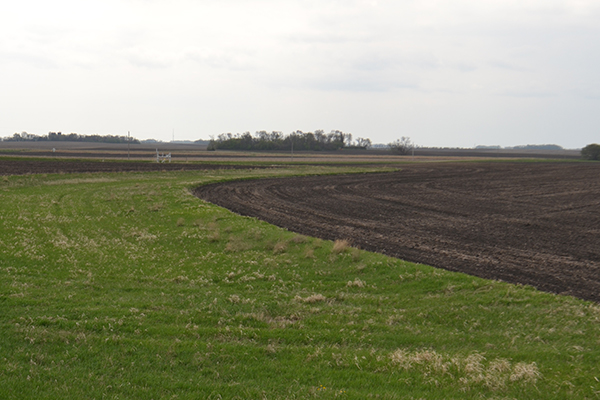This week Governor Mark Dayton’s office and Minnesota Agriculture Commissioner Dave Frederickson released a new proposal for a groundwater protection measure that aims to reduce elevated nitrate levels in drinking water. This proposal is the result of input gathered from seventeen public meetings across the state that engaged over 1,500 farmers, landowners, and other Minnesotans in conversation about this issue. They also received over 820 written comments. The goal of the proposal is to ensure that more Minnesota residents have clean, safe, and reliable drinking water without nitrate contamination. Nitrates are a common contaminant in Minnesota groundwater. It’s naturally occurring, but also has many human-made sources. Too much nitrate can lead to serious human health concerns such as methemoglobinemia in babies, more commonly referred to as ‘blue baby syndrome,’ and in adults, it can cause headaches and cramps along with elevated risks for certain cancers.
Gov. Dayton commented, “I am grateful to the many farmers, landowners, and others who worked with the Department of Agriculture to develop this proposal, which would greatly improve the quality of drinking water for Minnesotans. Clean, safe, reliable water in our communities is everyone’s concern, and everyone’s responsibility.”
There will be a public comment period about the new proposed rules beginning in the spring and public hearings will take place this summer. The dates of the comment period and public hearings have not been scheduled, but CURE will publicize this information when it is announced.
Basics of the proposed rule:
- Applies to vulnerable areas and areas with high nitrate levels in public drinking waters.
- Creates a system of voluntary and mandatory mitigation practices in areas with high nitrate concentrations in the public water supplies.
Timeline proposed by the Minnesota Department of Agriculture:
- Mid to Late May 2018 – The Department of Agriculture publishes the draft groundwater protection rule and Statement of Need and Reasonableness for a 30-day public comment period.
- Summer 2018 – The Department of Agriculture holds public hearings on the draft groundwater protection rule.
- Fall 2018 – The Office of Administrative Hearings reviews the comments and gives the Department of Agriculture 180 days to make revisions to the groundwater protection rule based on Administrative Law Judge and public hearings.
- December 2018 – The Department of Agriculture submits the final groundwater protection rule to Office of Administrative Hearings, the Office of the Revisor of Statutes, and to the Governor.
View the full press release from Governor Dayton’s office.
Details of the Proposed Rule:
Groundwater Protection Effort – Part One:
Fertilizer Application During the Fall Season
Where the Proposal Would Apply:
- Vulnerable Areas – The proposed groundwater protection measure would restrict the application of fertilizer in areas with more porous soils (coarse textured soil, karst, shallow bedrock), which have the capacity to leach greater volumes of water during the fall season. These new procedures for fertilizer application would reduce the movement of nitrates through the soil into groundwater supplies.
- Public Water Supply Areas – The proposed groundwater protection measure also would restrict the application of fertilizer during the fall in Drinking Water Supply Management Areas where the nitrate concentration exceeds 5.4 mg/L.
Exceptions to the Fertilizer Application Requirements:
- Crops That Require Fall Nitrogen – An exemption would exist for crops such as winter grains, grass seed, and cover crops that require fall nitrogen.
- Areas with Low Leaching Potential – An exemption would exist for areas with low leaching potential based on precipitation and evapotranspiration rates and a short spring planting season.
- Areas with No Row Crops – An exemption would exist for counties where less than three percent of land is used for row crops (northeast Minnesota and Ramsey County).
Groundwater Protection Effort – Part Two:
Mitigation Requirements for Elevated Nitrate Levels in Drinking Water
Voluntary Action:
- Level One and Two – In areas where the public water supply has nitrate concentrations in excess of 5.4 mg/L. Drinking Water Supply Management Areas would be encouraged to voluntarily implement best management practices to reduce nitrate levels. Under Level Two, the decision to implement best management practices would remain voluntary.
Mandatory Action:
- Level Three – If after three years under Level Two nitrate concentrations continue to increase, then the Drinking Water Supply Management Area would be given a Level Three designation. The Commissioner of Agriculture – in consultation with a local advisory team – would then direct landowners to implement best management practices, testing, and educational programs.
- Level Four – If after three years under Level Three nitrate concentrations continue to increase or remain high, the Commissioner of Agriculture – in consultation with local advisory teams – could direct landowners to implement additional practices beyond best management practices to address high nitrate levels.
Exceptions:
- Progress Under Way – In areas where progress is being made, the Commissioner of Agriculture could grant a one-time exemption before moving the area to the next level of regulation.
Groundwater Protection Effort – Part Three:
Designation of High Priority Areas
- Criterion for High Priority Areas – The Commissioner of Agriculture could designate Level Two areas to be “high priority” and focus resources in those communities. The Commissioner would make the determination based on risk to people and communities and the degree of contamination. The Department of Agriculture also would approve a detailed plan for addressing high nitrate levels in these areas.



